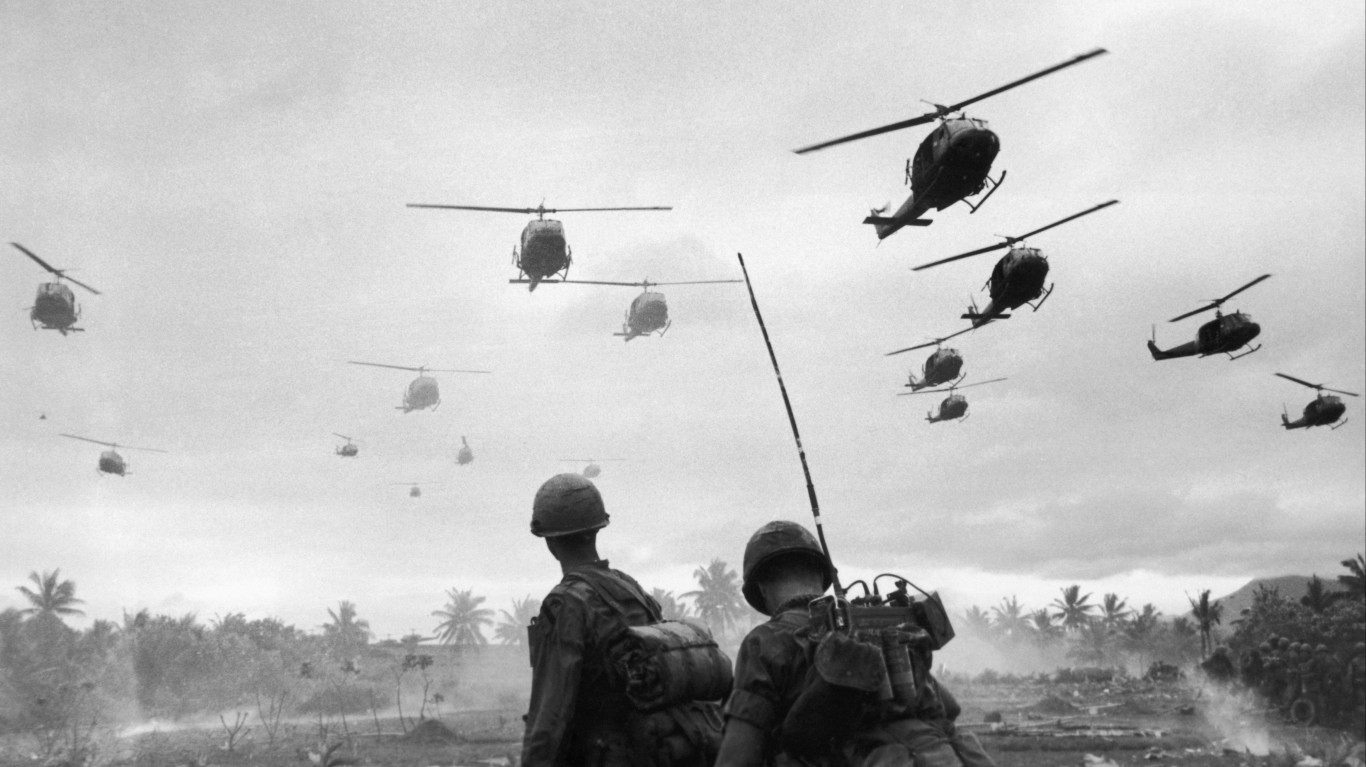
The Vietnam War was the first major conflict seen live on televisions in American living rooms. On a nightly basis, we watched airplanes drop bombs, soldiers tramping through rice paddies and jungles, villages set on fire, and the suffering of the Vietnamese people.
The war also was captured in unforgettable images from intrepid photographers – photojournalists from all over the world who recorded indelible images of the fighting and its aftermath. These included Pulitzer Prize winners Horst Faas of Germany and Sal Veder of the Associated Press; United Press International staff photographer David Hume Kennerly; Welsh war photographer Philip Jones Griffiths; and Henri Huet, a French war photographer covering the war for the Associated Press.
Some of these photographers paid the ultimate price in pursuit of the visual truth. National Observer photographer Dickey Chapelle was killed by a landmine blast, becoming the first female American correspondent killed in action. Another casualty of war was Life photographer Larry Burrows, who died with Henri Huet when his helicopter was shot down over the Ho Chi Minh trail in Laos in 1971.
To assemble a collection of some of the most terrifying images of the Vietnam War by a variety of photographers – some of them unknown – 24/7 Tempo reviewed historical photo archives from sources including Getty Images, Picryl, Wikimedia, and the Library of Congress.
Click here to see 29 horrifying images of the Vietnam War
American combat involvement in Vietnam lasted from 1964 to 1973, and was one of the nation’s longest wars. By the time the United States pulled out of Vietnam in 1973, 58,000 American soldiers had been killed. (It was one of the wars in which the most Americans died.)
The war plunged the nation into division and self-doubt as a superpower. At home and in Southeast Asia, photojournalists captured the fear, chaos, anguish, and divisiveness of the conflict. (Here’s how every war in U.S. history ended.)
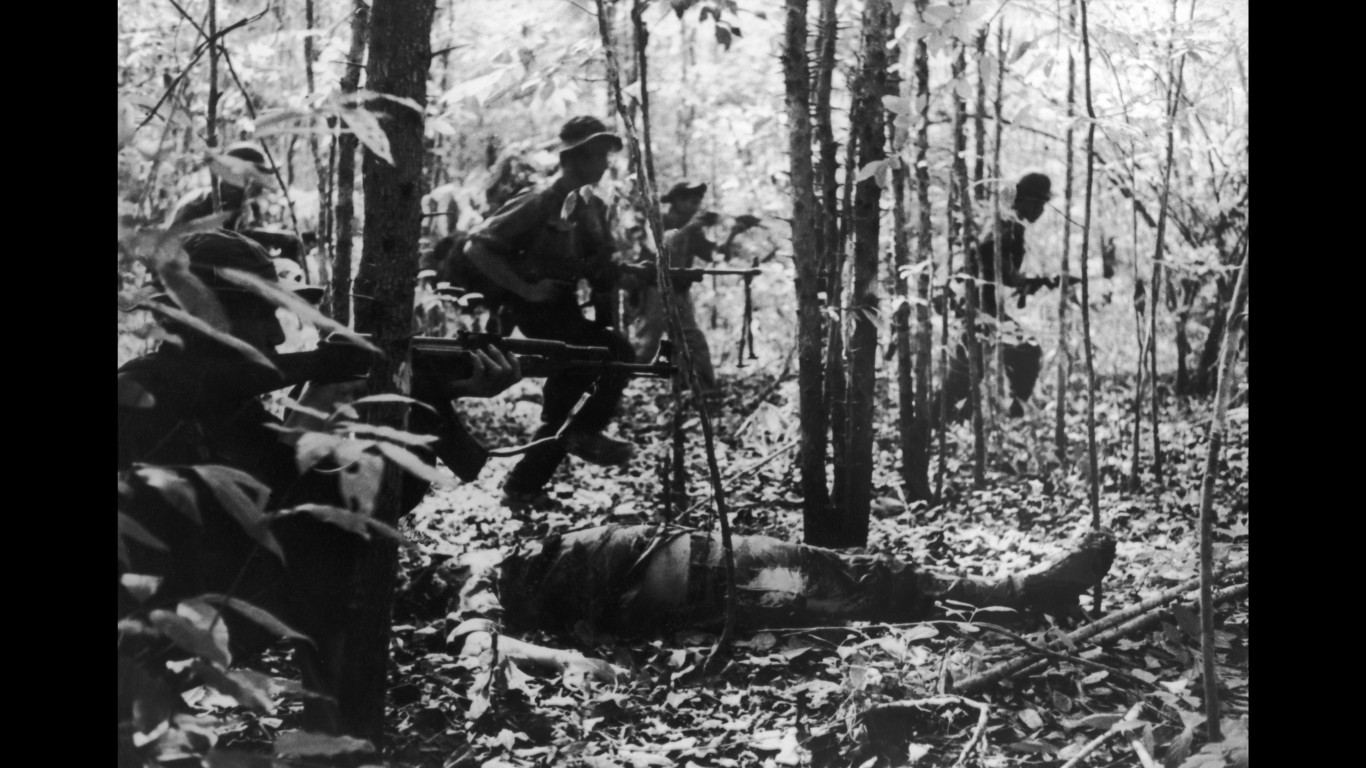
The Viet Cong advances
A Viet Cong detachment advances through the forest in January 1967. A dead American soldier lies In the foreground.
[in-text-ad]

Bombing a coastal target
A U.S. Air Force Strategic Air Command B-52 Stratofortress drops 750-pound bombs on the Vietnamese coast in October 1965.
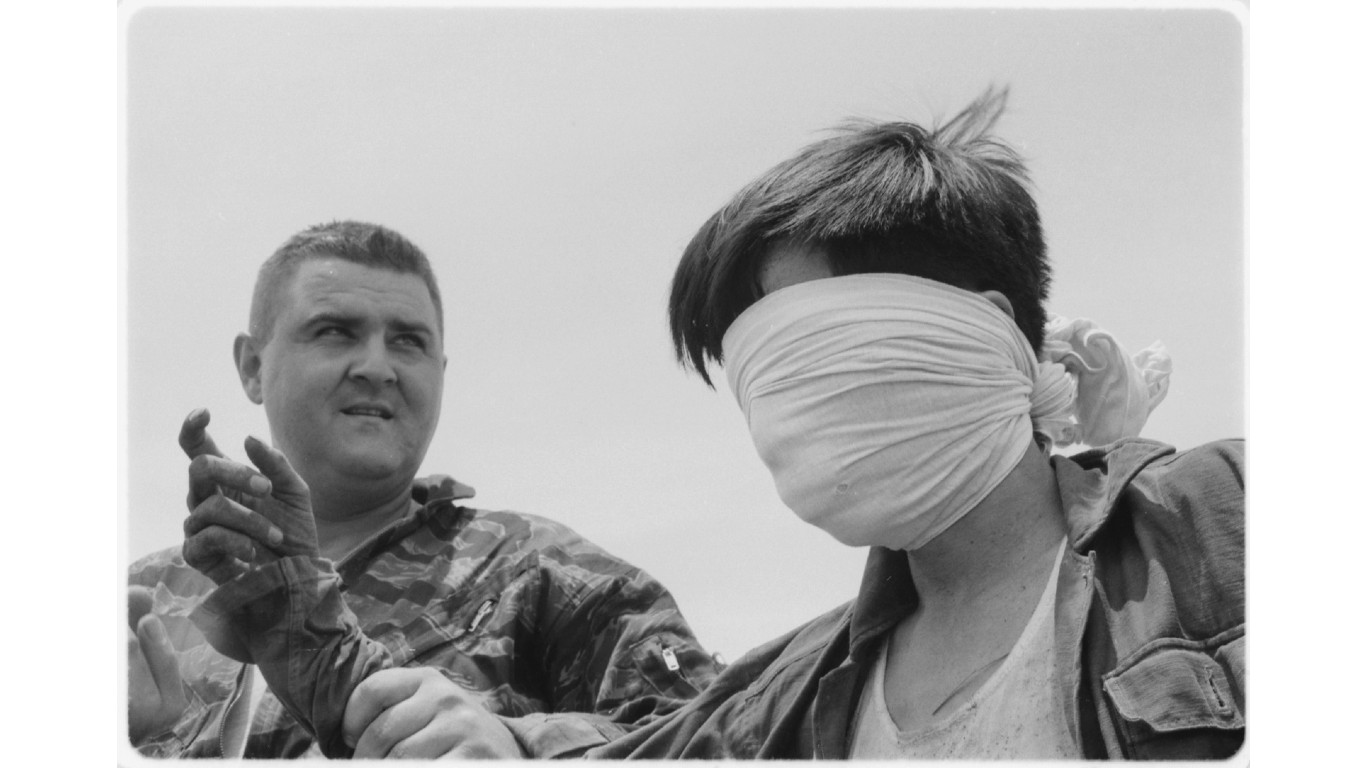
A blindfolded prisoner
Staff Sergeant R.E. Steffy binds and blindfolds a Viet Cong fighter who was taken prisoner in Van Tuong in August 1965.
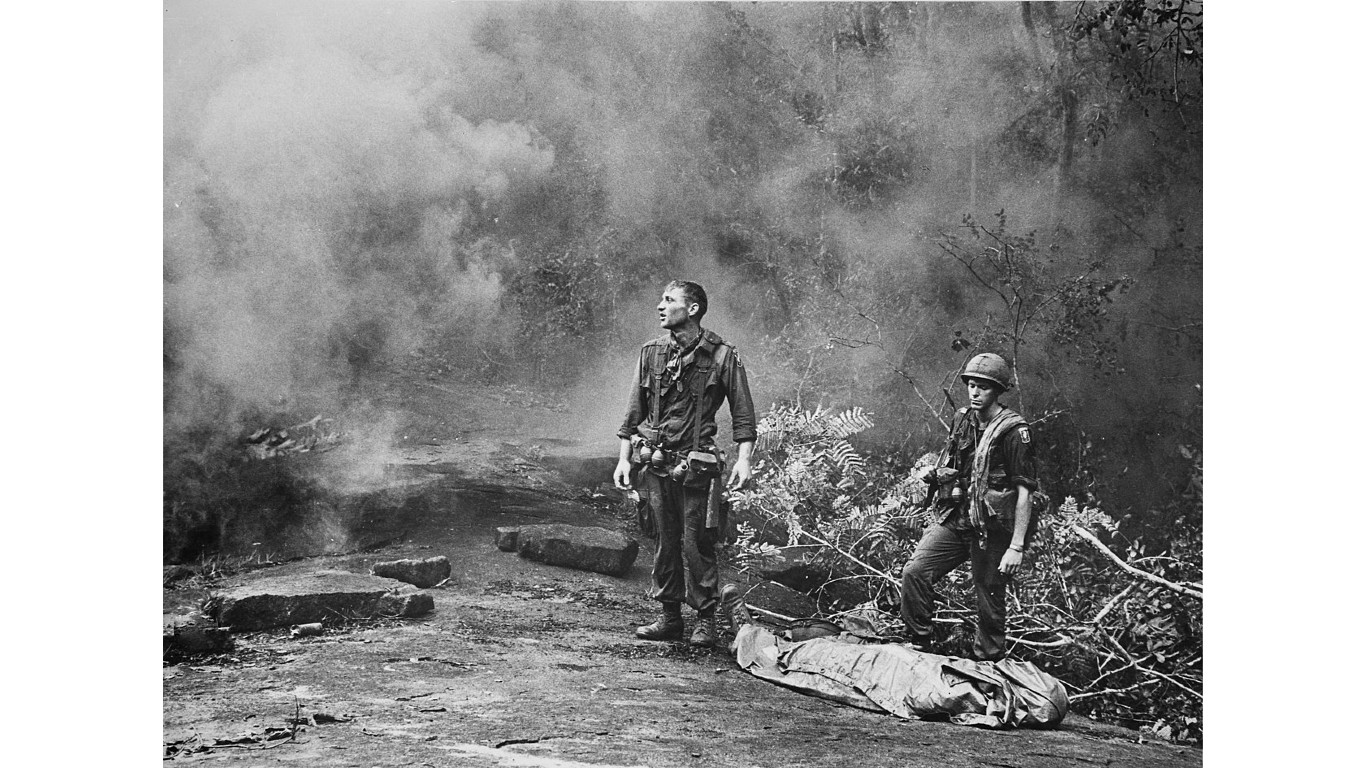
Waiting for the copter
U.S. soldiers Ruediger Richter (left) and Daniel E. Spencer await a helicopter to evacuate their fallen comrade after a battle in jungle-covered hills in Long Khanh Province in 1966.
[in-text-ad-2]
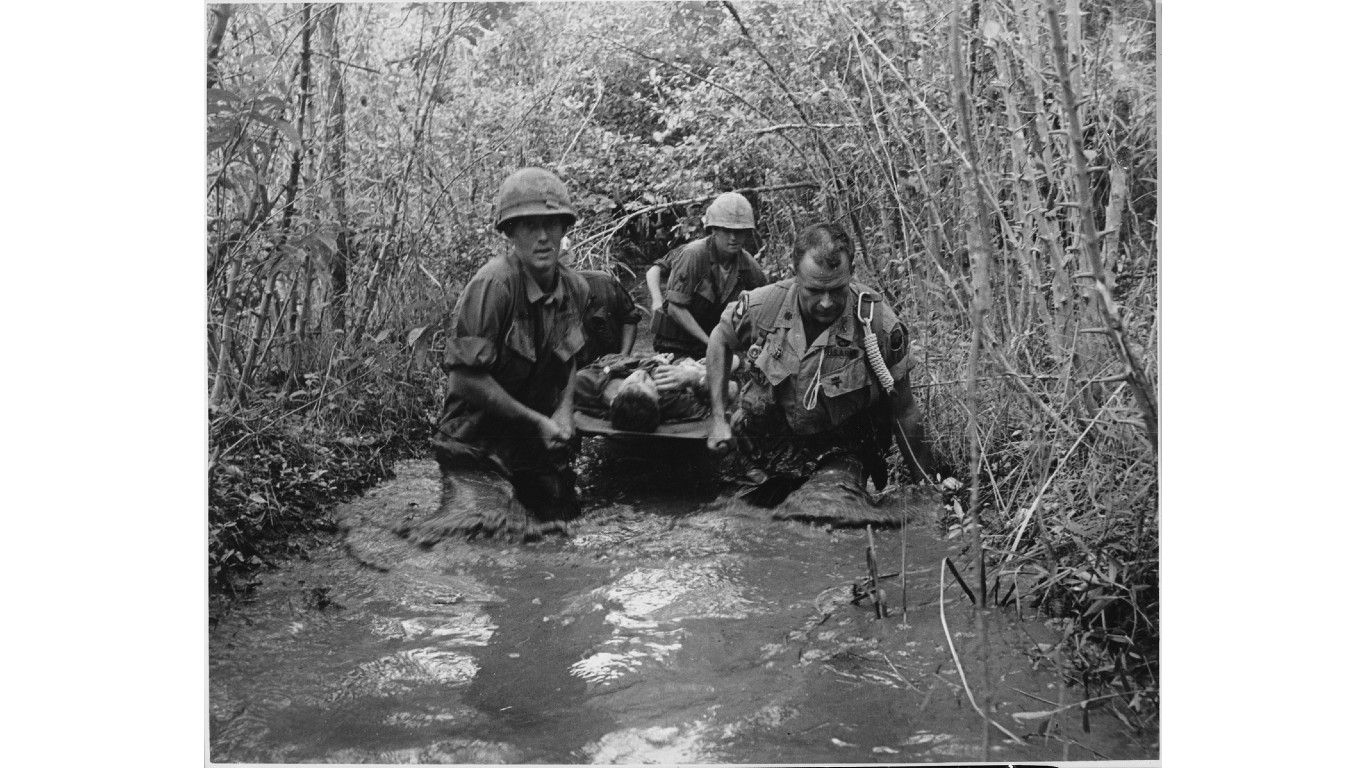
Saving a comrade
U.S. soldiers carry a wounded comrade through a swamp in 1969.
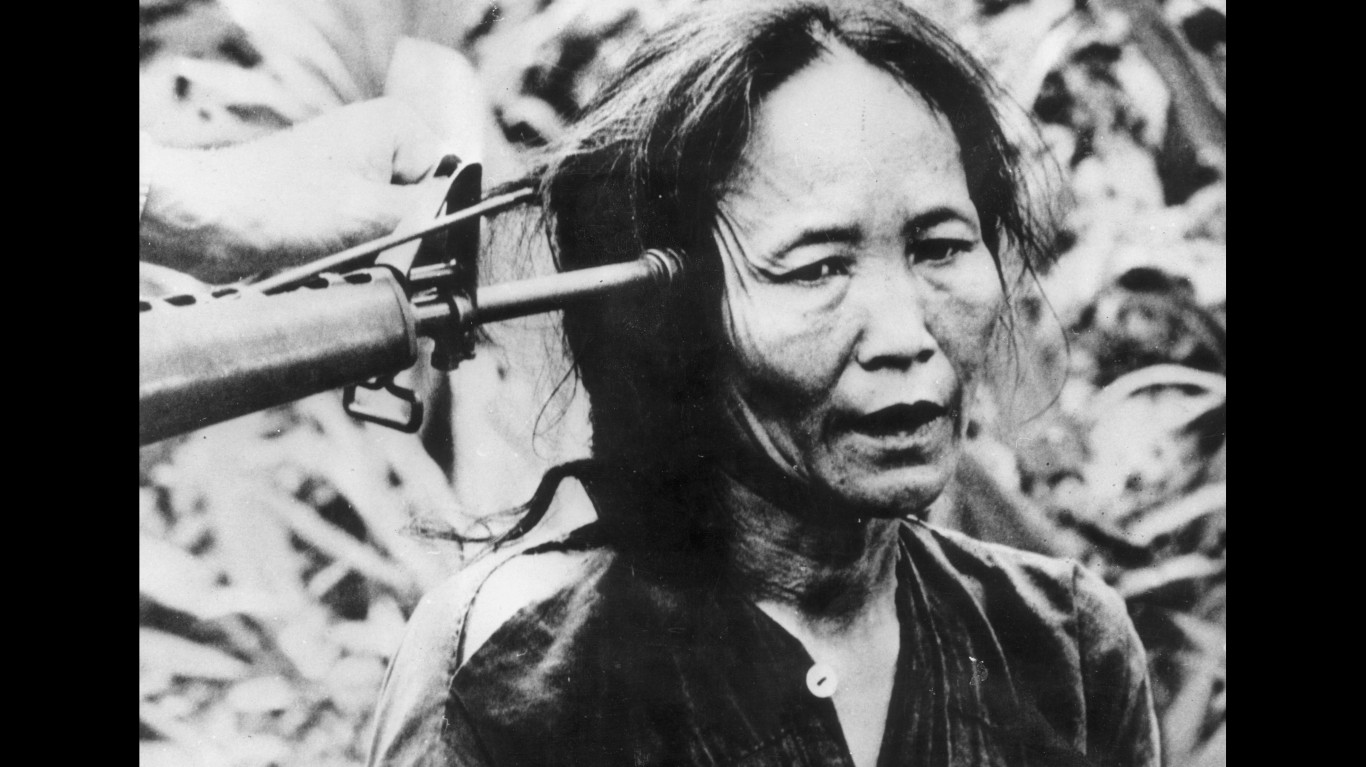
A frightened civilian
A Vietnamese civilian with a gun pointed at the side of her head.
[in-text-ad]
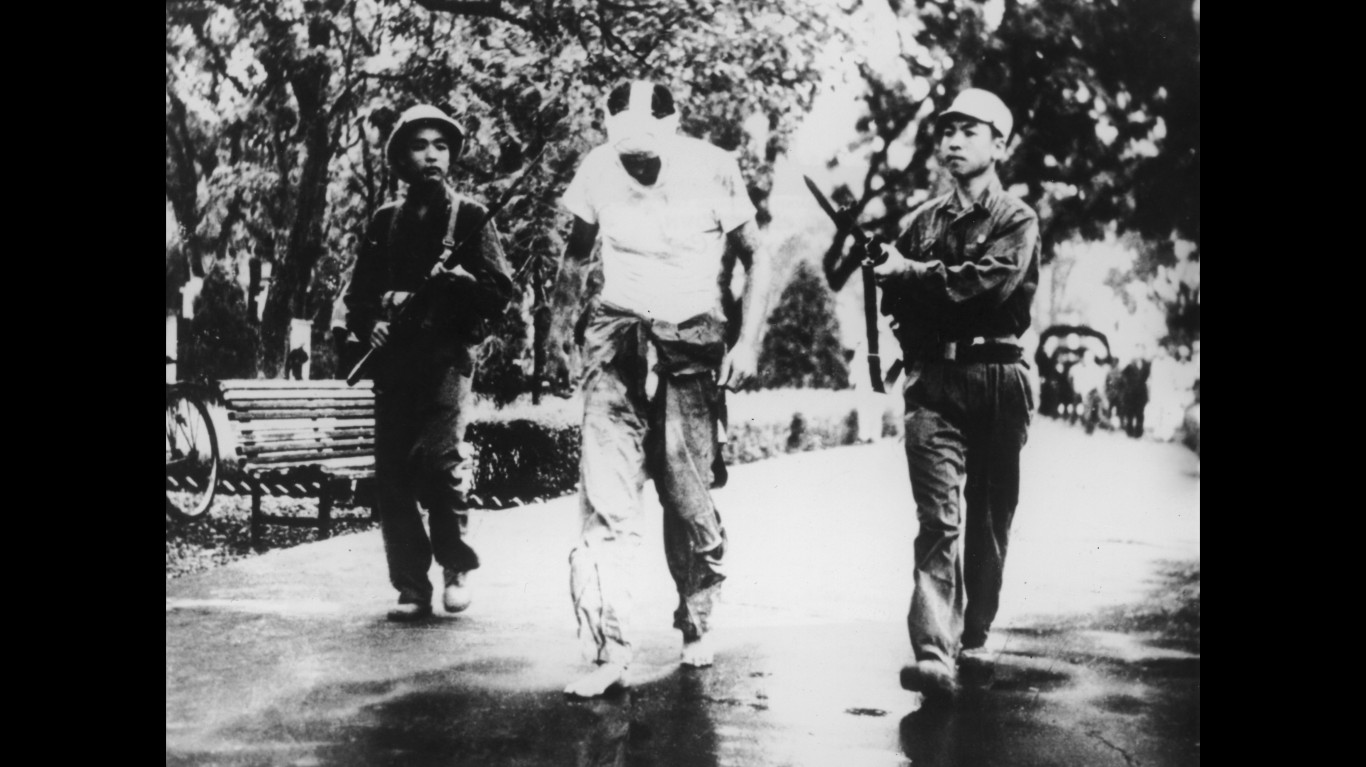
An American POW
U.S. Air Force Lieutenant Colonel James L. Hughes, forced to eject from his F-105 over North Vietnam on May 5, 1967, is paraded barefoot and with a bandaged face through the street by two North Vietnamese soldiers during the Vietnam War.
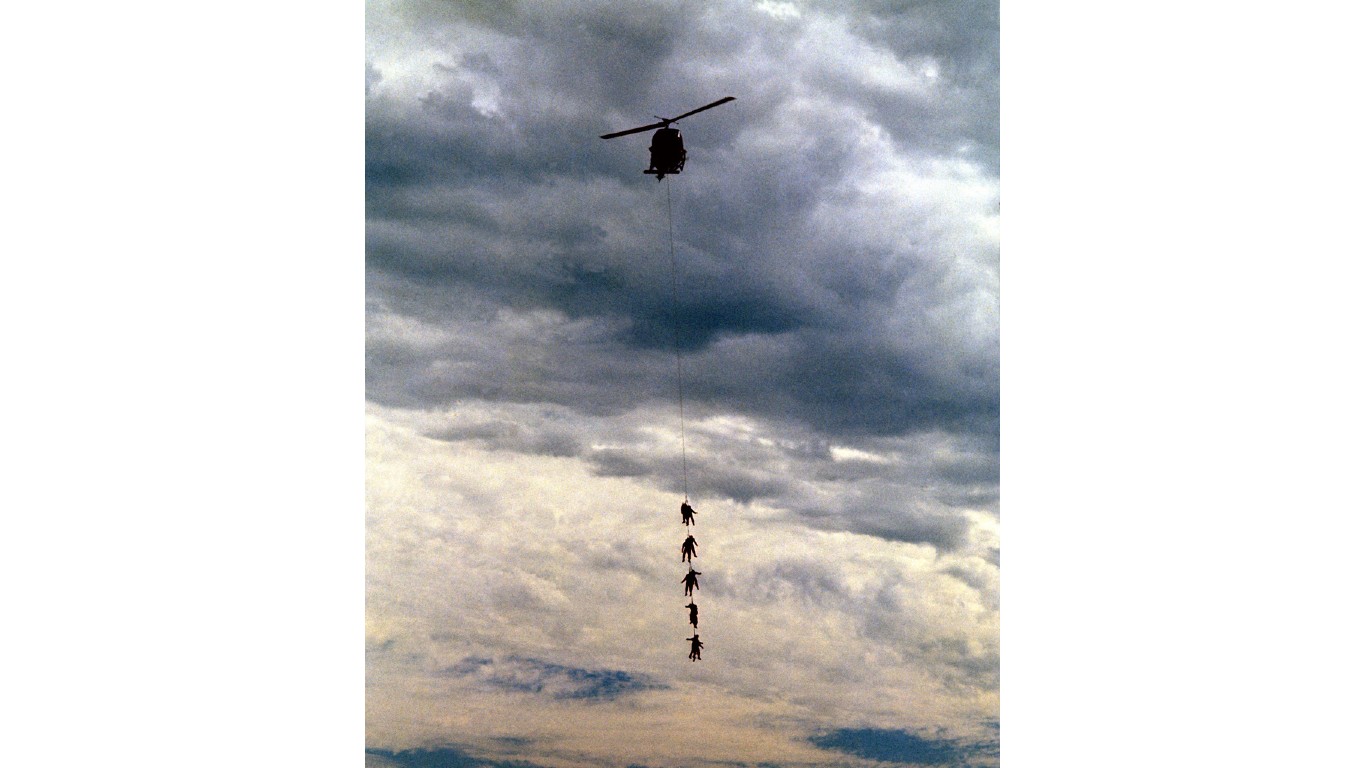
Training for action
Ten Marine Corps test jumpers in “stick” formation are towed by a helicopter during tests of the special patrol insertion/extraction system at the Naval Aerospace Recovery Facility in El Centro, Calif.

North Vietnamese Army casualties
The bodies of three North Vietnamese soldiers lie in the street in Tan Son Nhut following a battle with U.S. and South Vietnamese troops.
[in-text-ad-2]
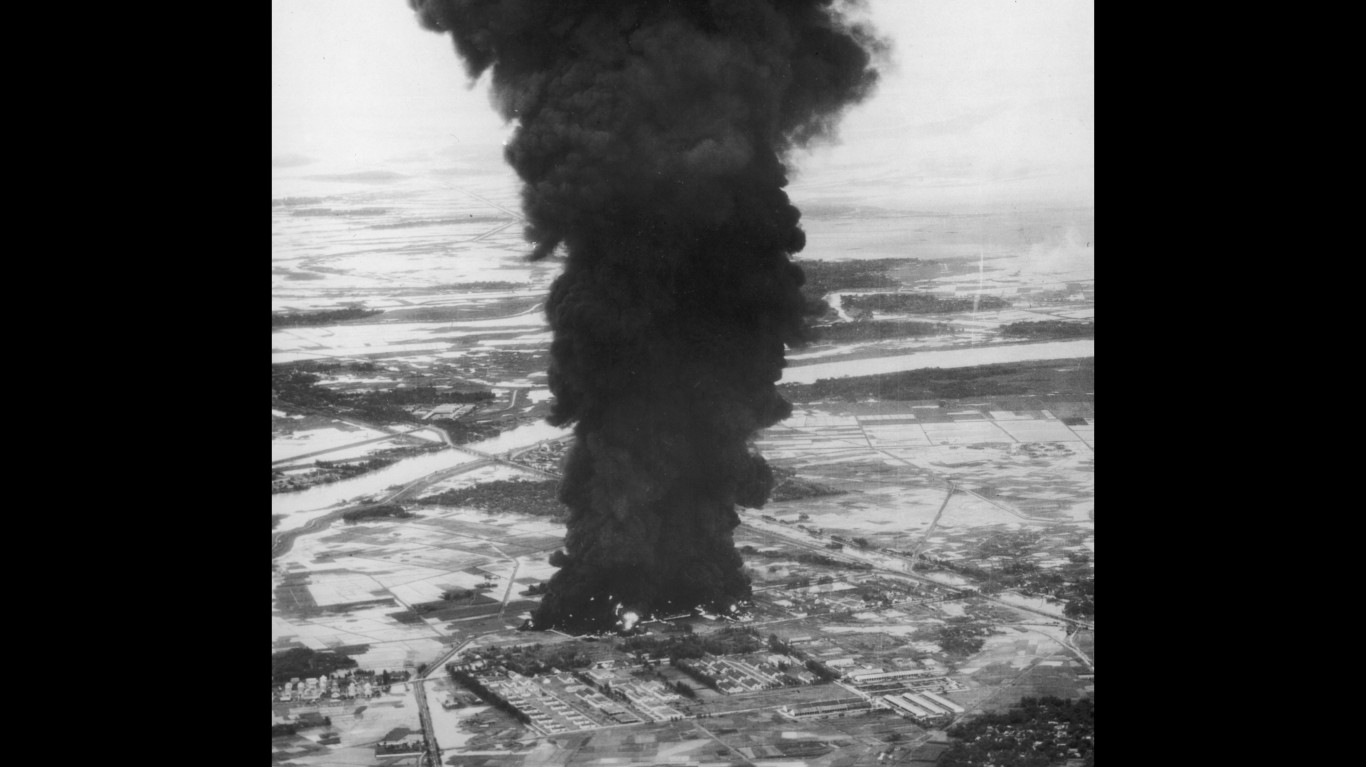
The Air Force attacks Hanoi
A plume of black smoke rises from a petroleum storage facility in Hanoi following a bombing run by U.S. planes on June 29, 1966.
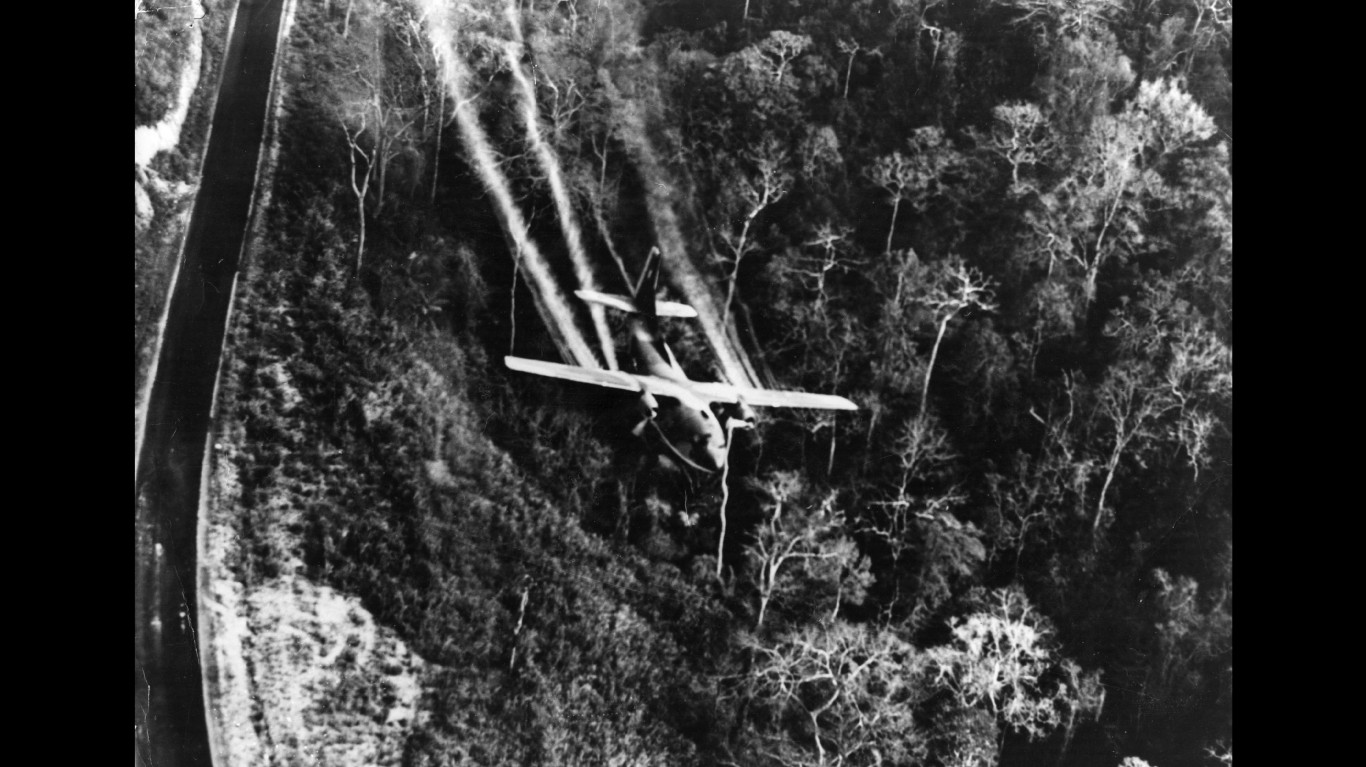
Defoliating the jungle
A U.S. Air Force Fairchild C-123 Provider sprays defoliants in the dense jungle growth in 1966.
[in-text-ad]
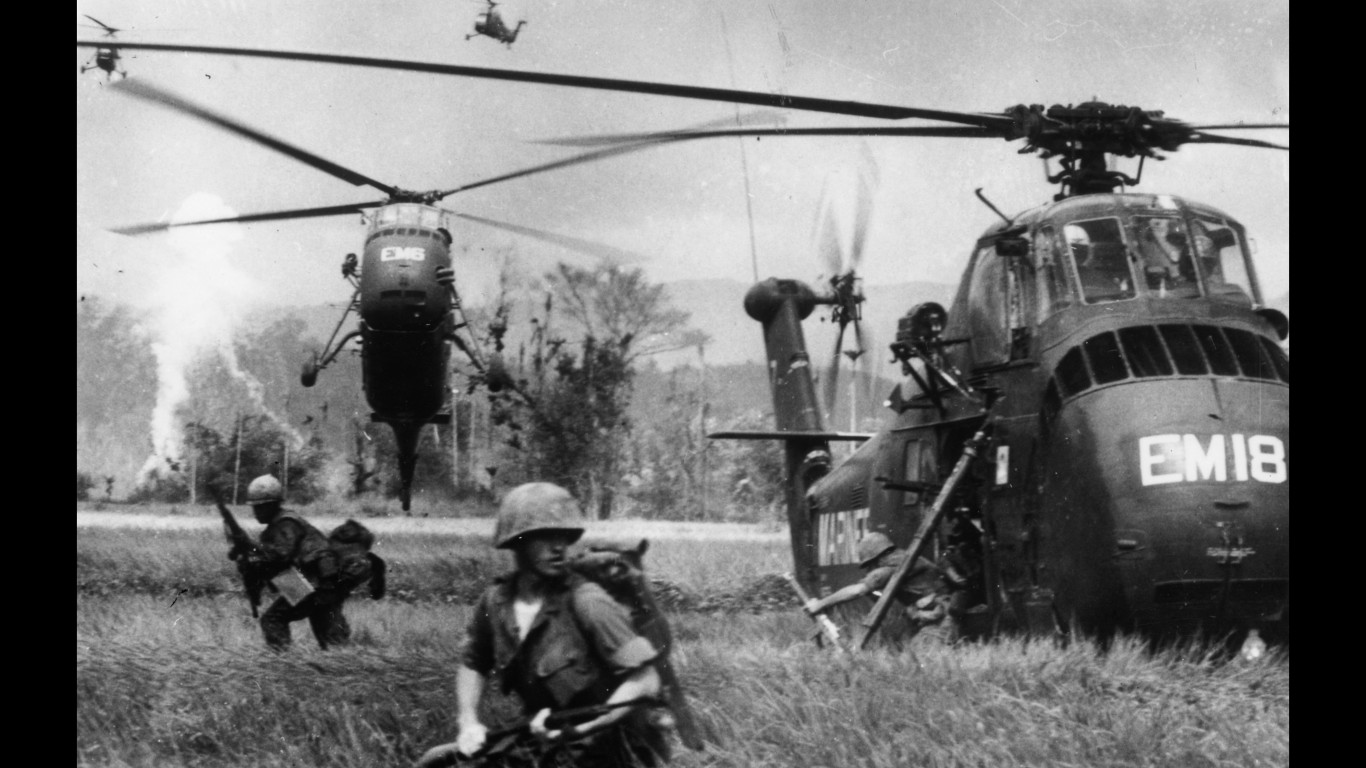
Landing in a swamp
U.S. Marines alight from helicopters and find themselves waist-high in swampy fields, as they move in position to clean out a Viet Cong position (the white smoke in the background is from a phosphorous rocket used as a landing marker)

Helicopters In action
American helicopters in action against the Viet Cong, a common scene during the Vietnam War.

Running for the copter
Marines scramble to avoid enemy gunfire as they board a helicopter at Khe Sanh on April 18, 1968.
[in-text-ad-2]
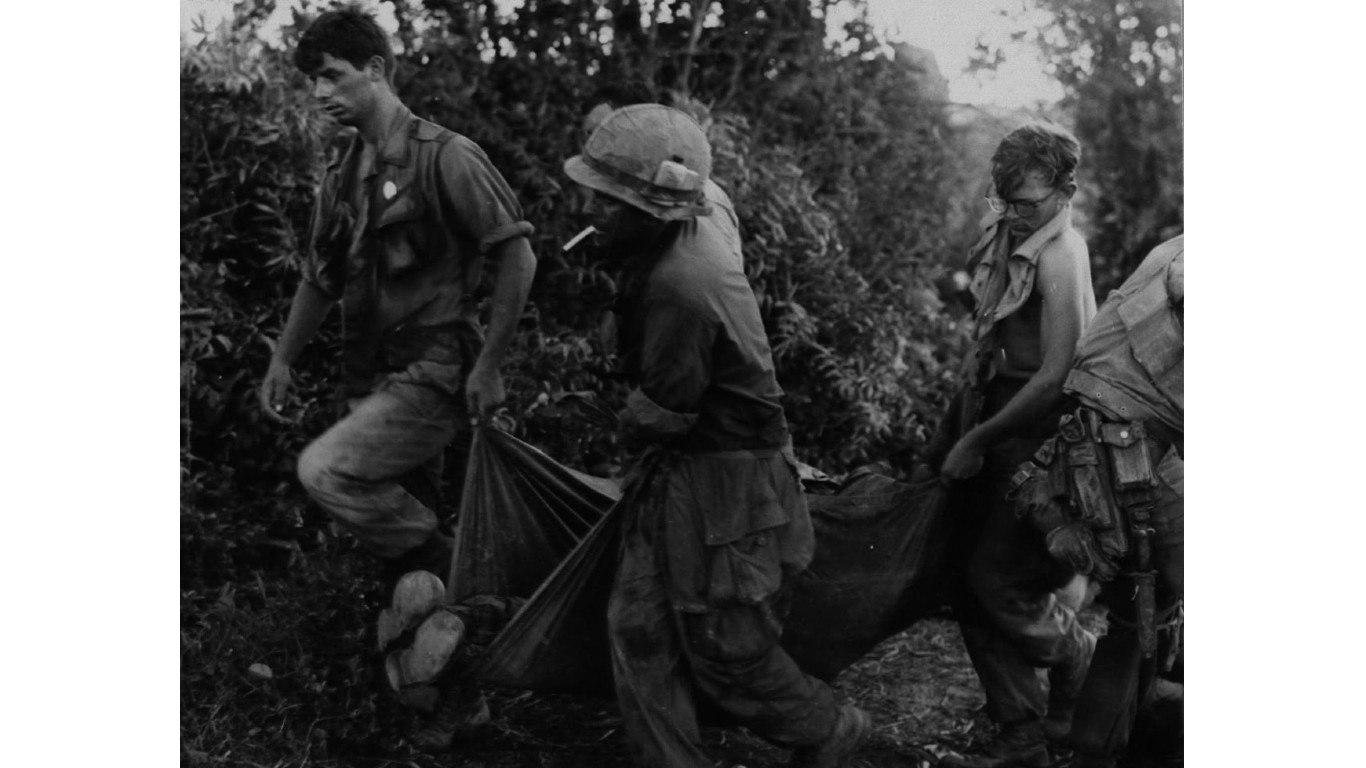
Carrying a fallen comrade
Marines of Company E, 2nd Battalion 7th Marines carry a dead comrade to a helicopter during Operation Arizona, in which four Marine battalions fought to clear the Viet Cong out of Quang Nam Province over eight days beginning June 14, 1967.
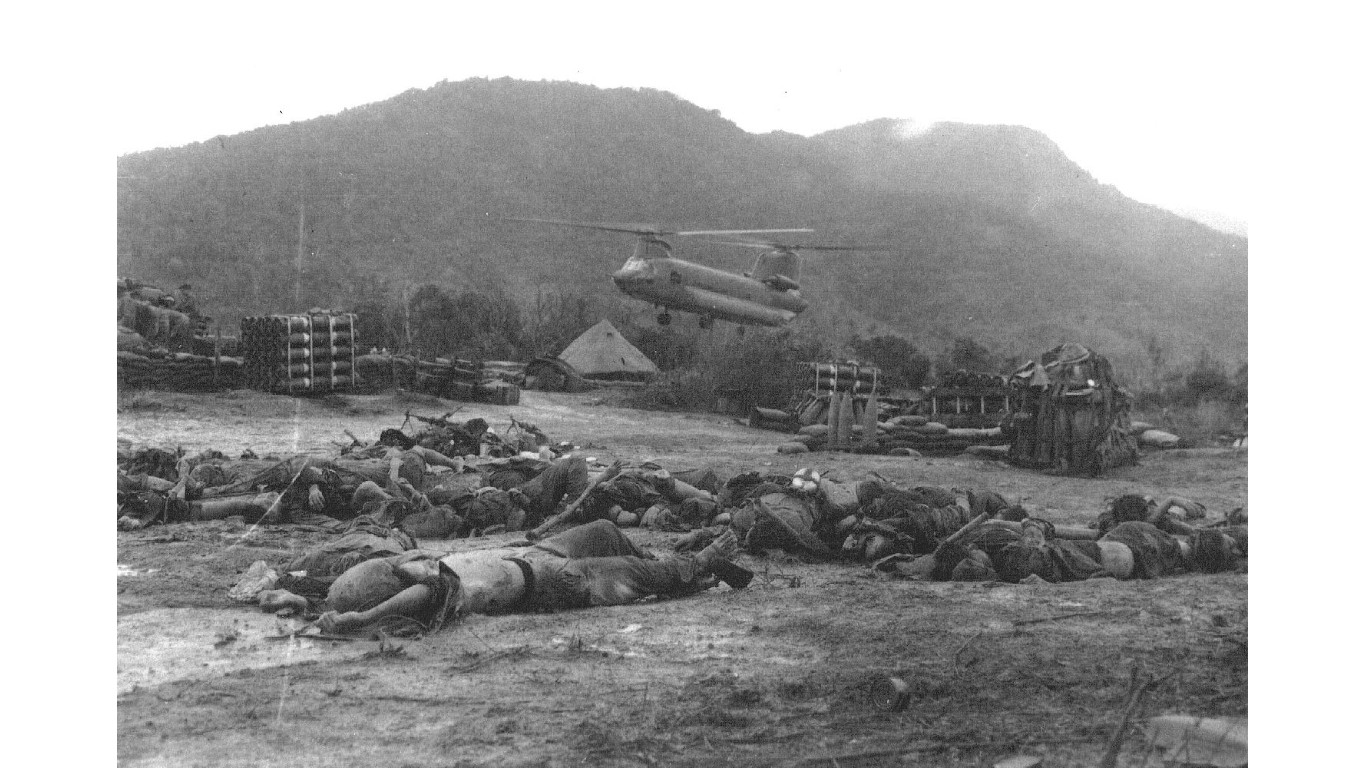
Dead North Vietnamese soldiers
In the foreground is a group of slain North Vietnamese soldiers as a Chinook helicopter rises above the area on Dec. 27, 1966.
[in-text-ad]
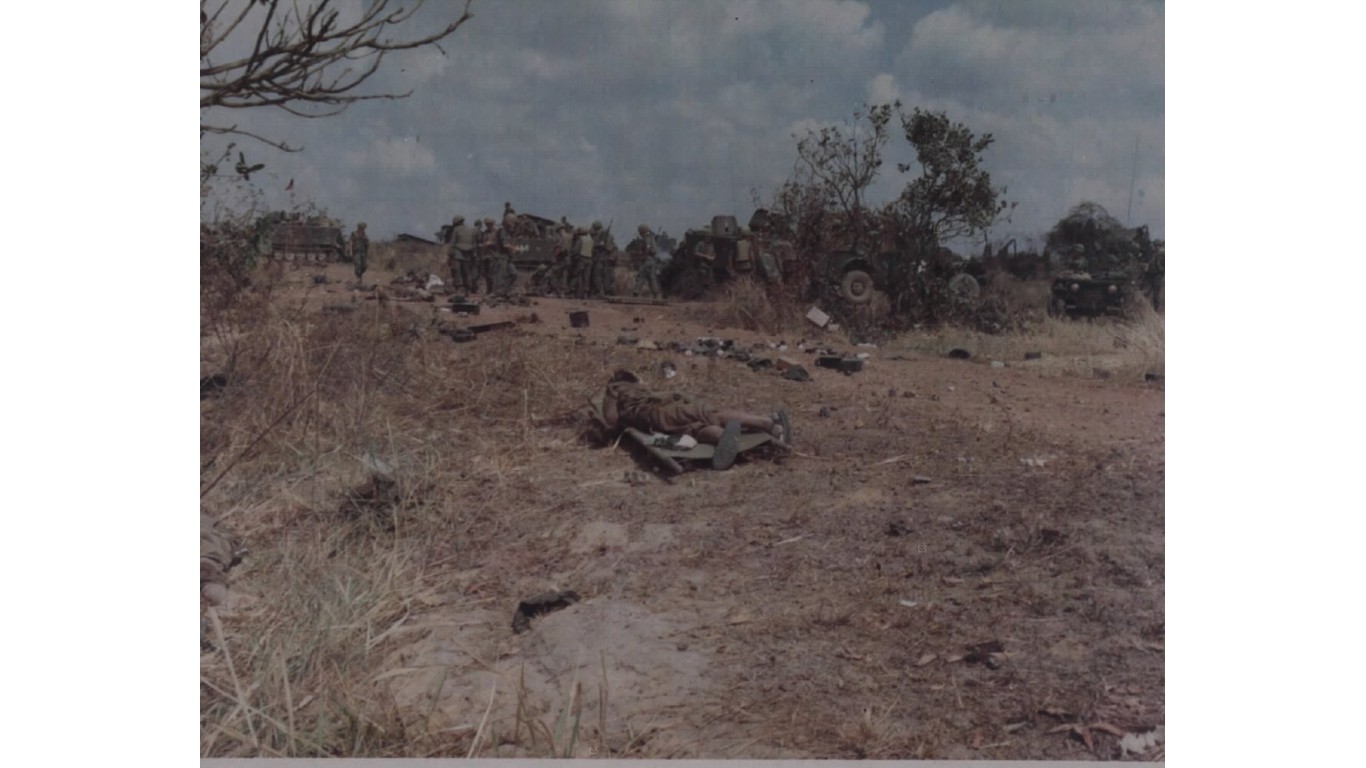
Surveying the dead
Members of the 9th Infantry Division (Mechanized) survey the dead Viet Cong soldiers and weapons after the assault on the II Field Forces complex at the Long Binh Post, the U.S. Army’s largest base in South Vietnam.
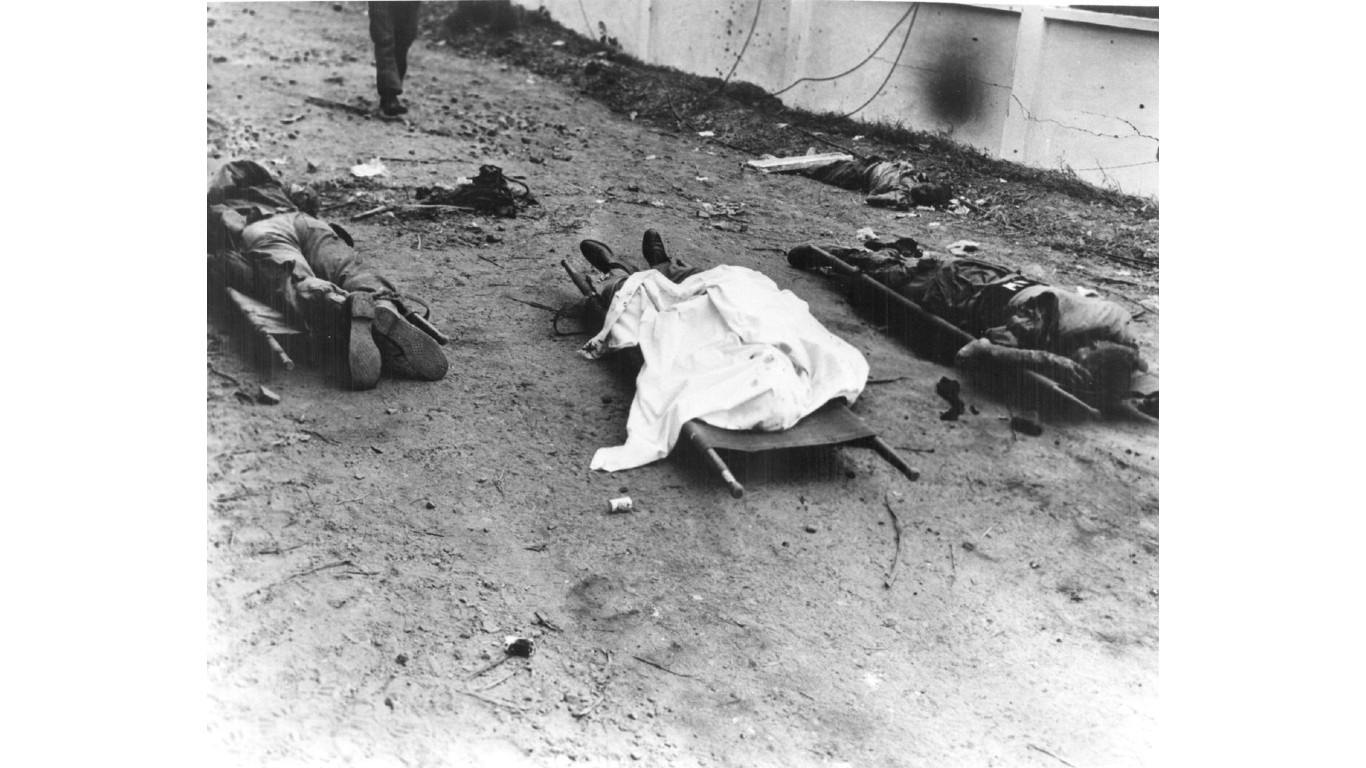
The dead in Saigon
Three military policemen in Saigon lie on stretchers after they were killed during the Tết Offensive in January 1968, with a dead Viet Cong fighter in the background.
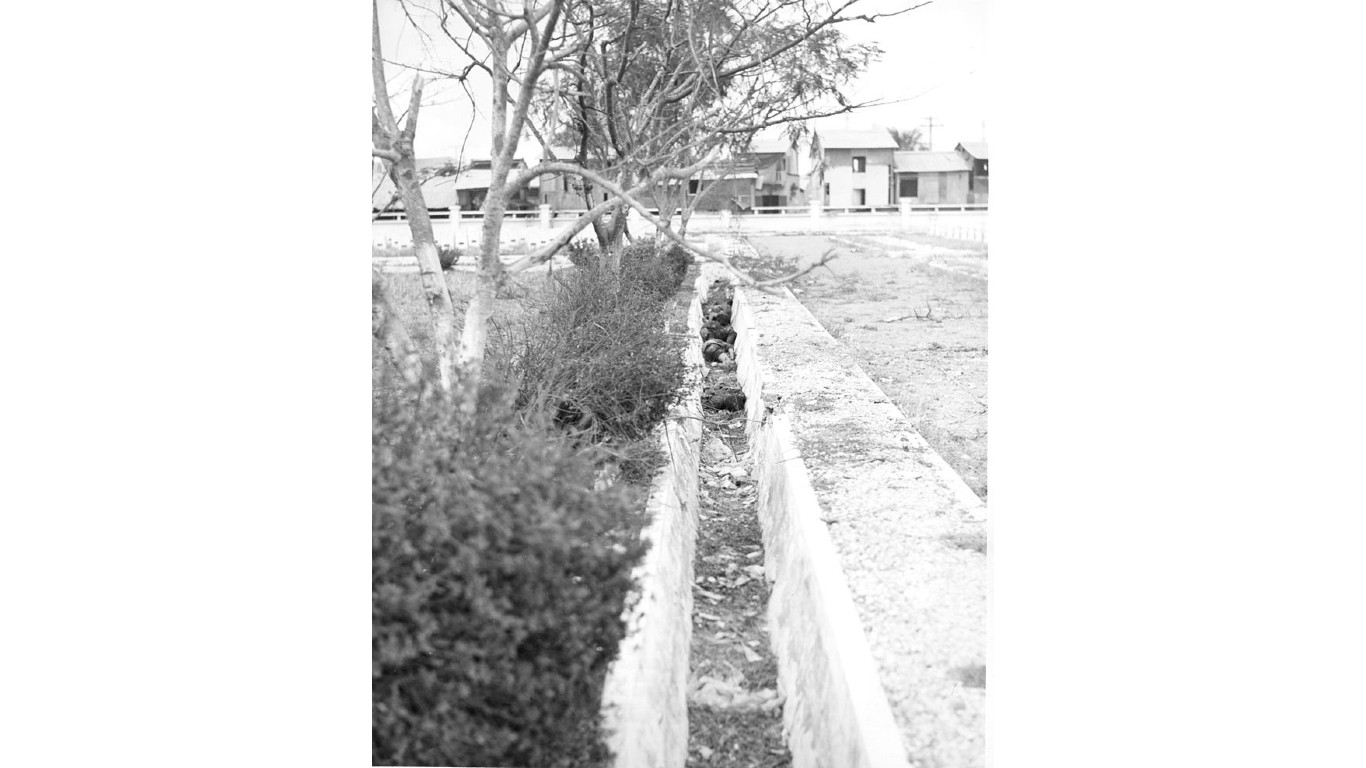
Dead bodies in a ditch
Viet Cong fighters killed by gunships and South Vietnamese soldiers lie in a ditch in the French National Cemetery near the Tan Son Nhut Air Base just outside Saigon.
[in-text-ad-2]
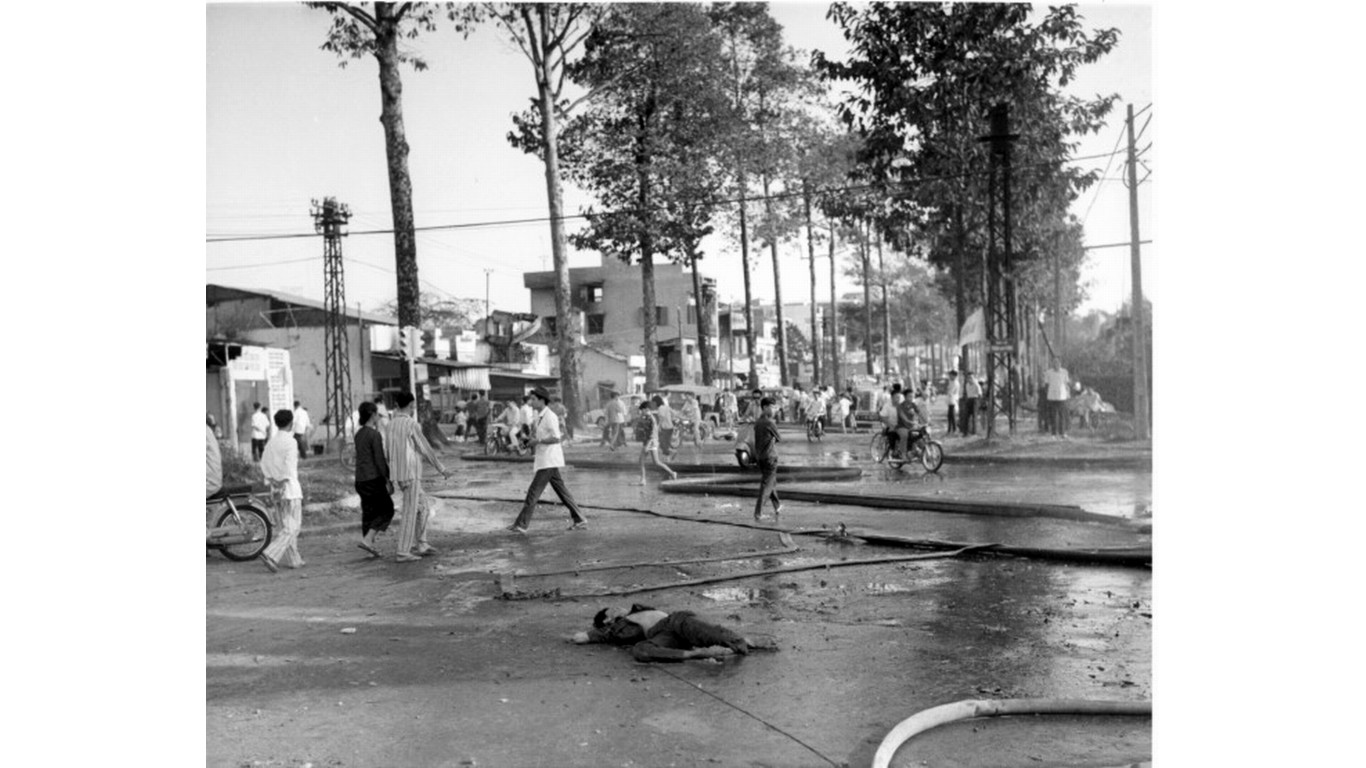
Life goes on in Saigon
A dead Viet Cong fighter lies on the ground in Saigon during the Tết Offensive in January 1968, as people carry on as usual around him.

Firing a rocket
Specialist George R. Sanchez of the 101st Airborne Division fires an M72 rocket launcher at an enemy position.
[in-text-ad]
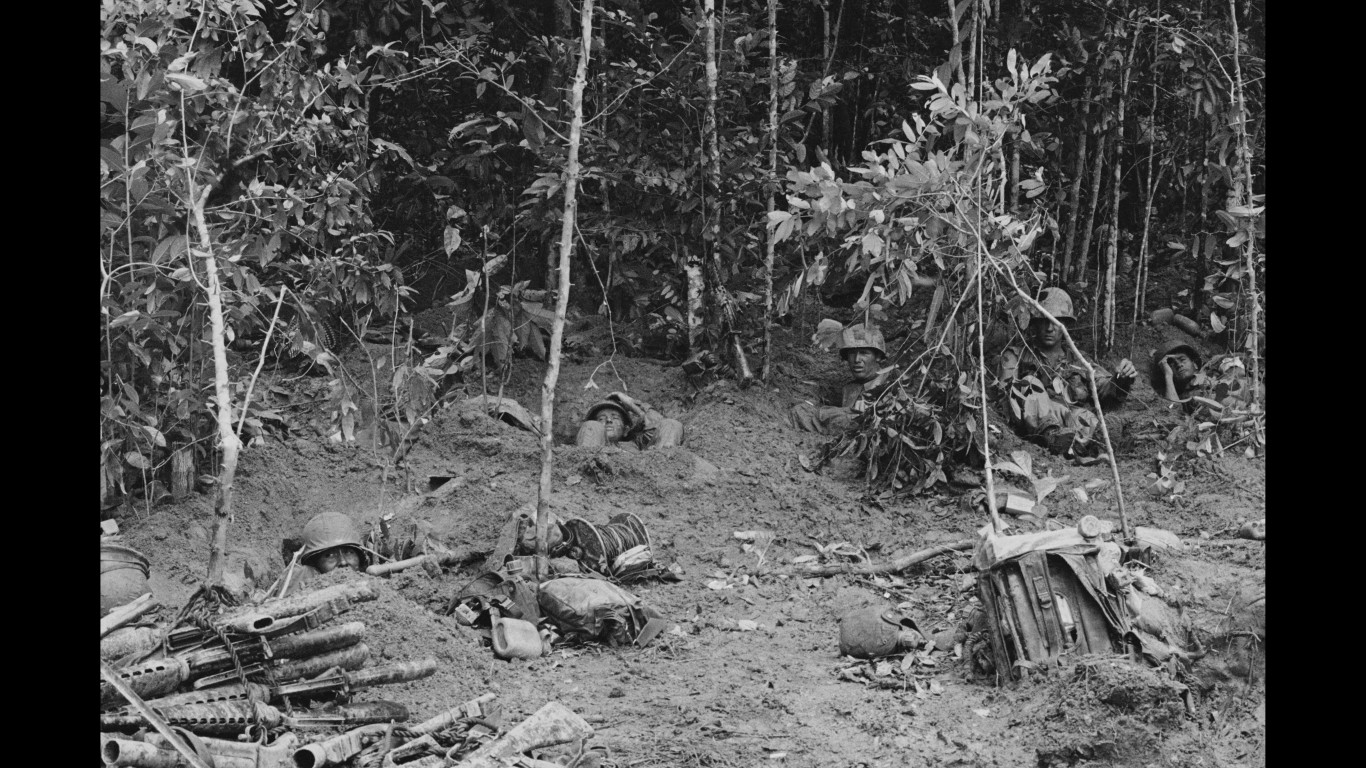
Soldiers at rest
American soldiers sleeping in their foxholes between engagements on Aug. 26, 1966.
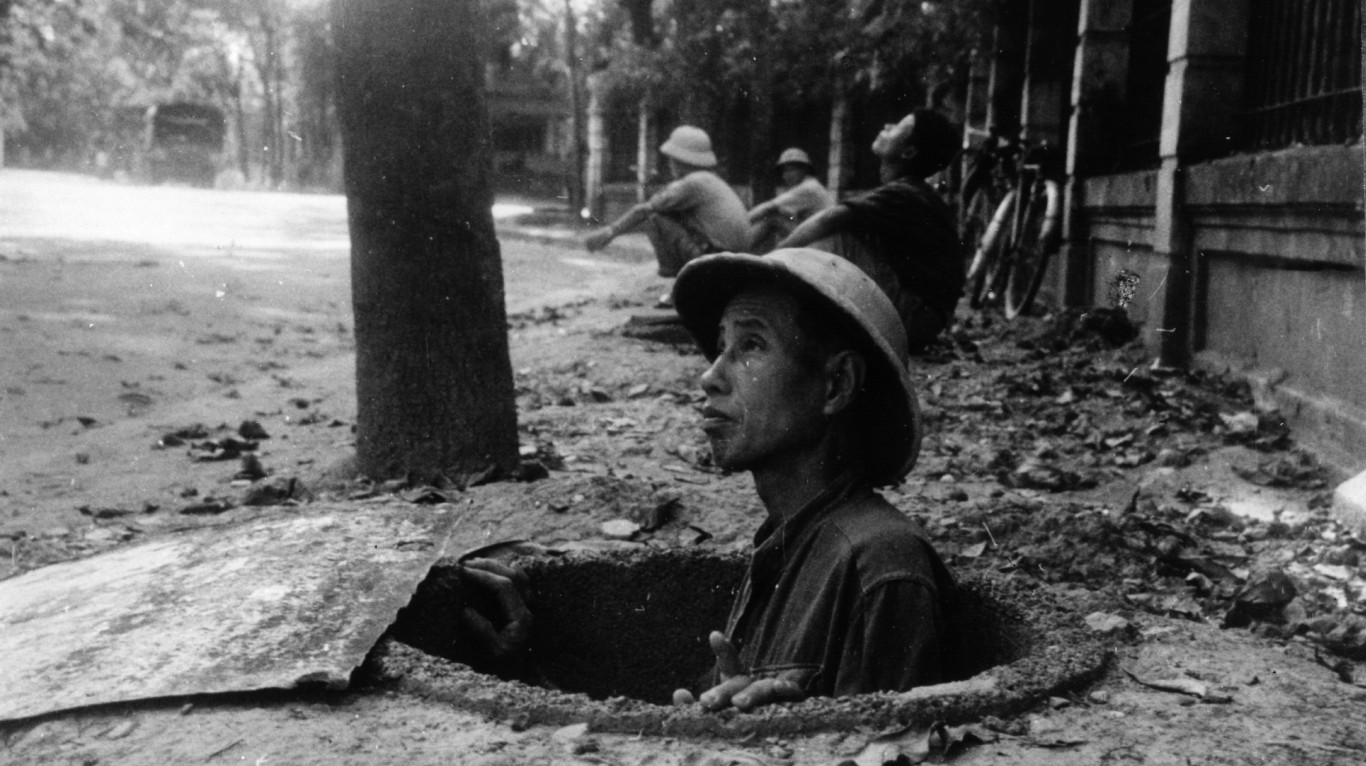
Shelter from the bombs
A resident of Hanoi takes refuge in an air-raid shelter on July 5,1967 during an American bombing raid.
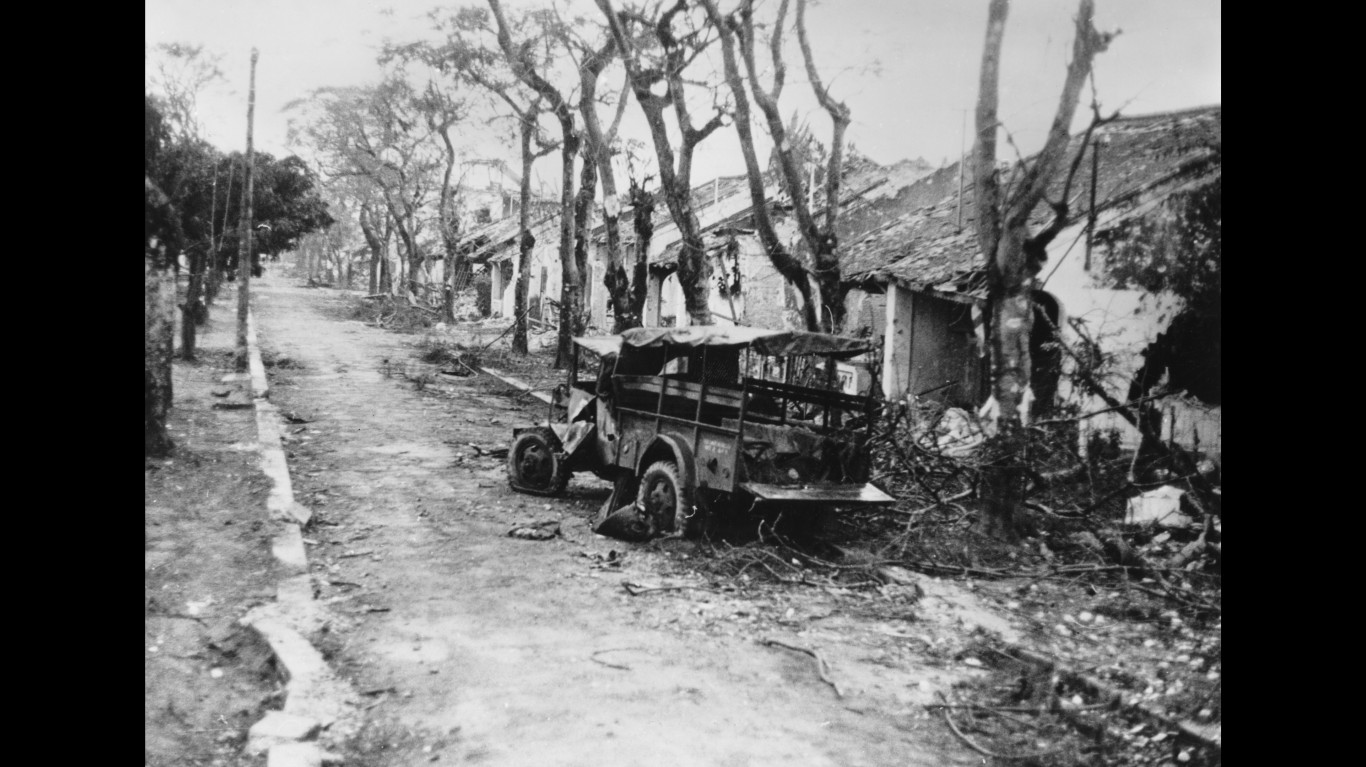
Destruction in Huế
The aftermath of the Battle of Huế, in which American and South Vietnamese forces recaptured the Central Vietnamese city from the Viet Cong on March 15, 1968.
[in-text-ad-2]
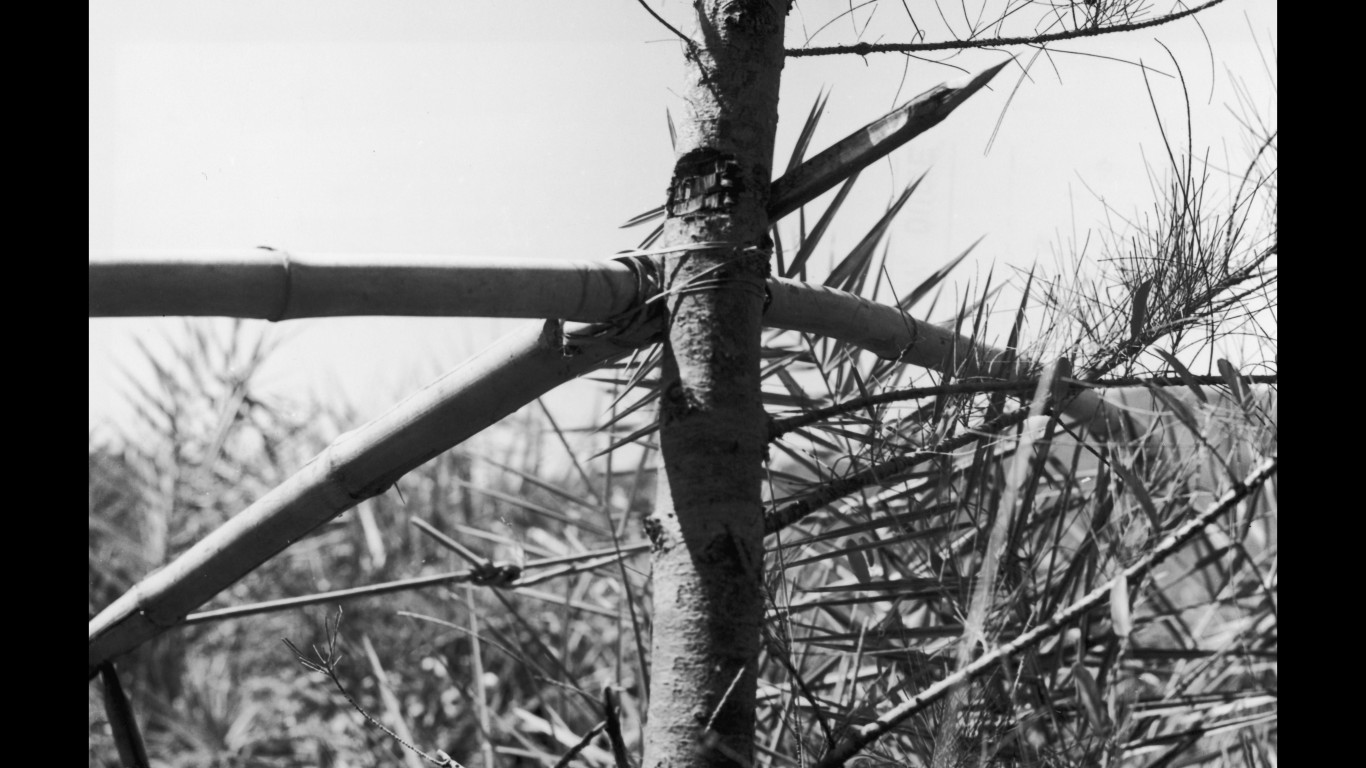
Viet Cong crossbow
A large bamboo crossbow device used by the Viet Cong to fire eight-foot spears at low-flying or landing helicopters.
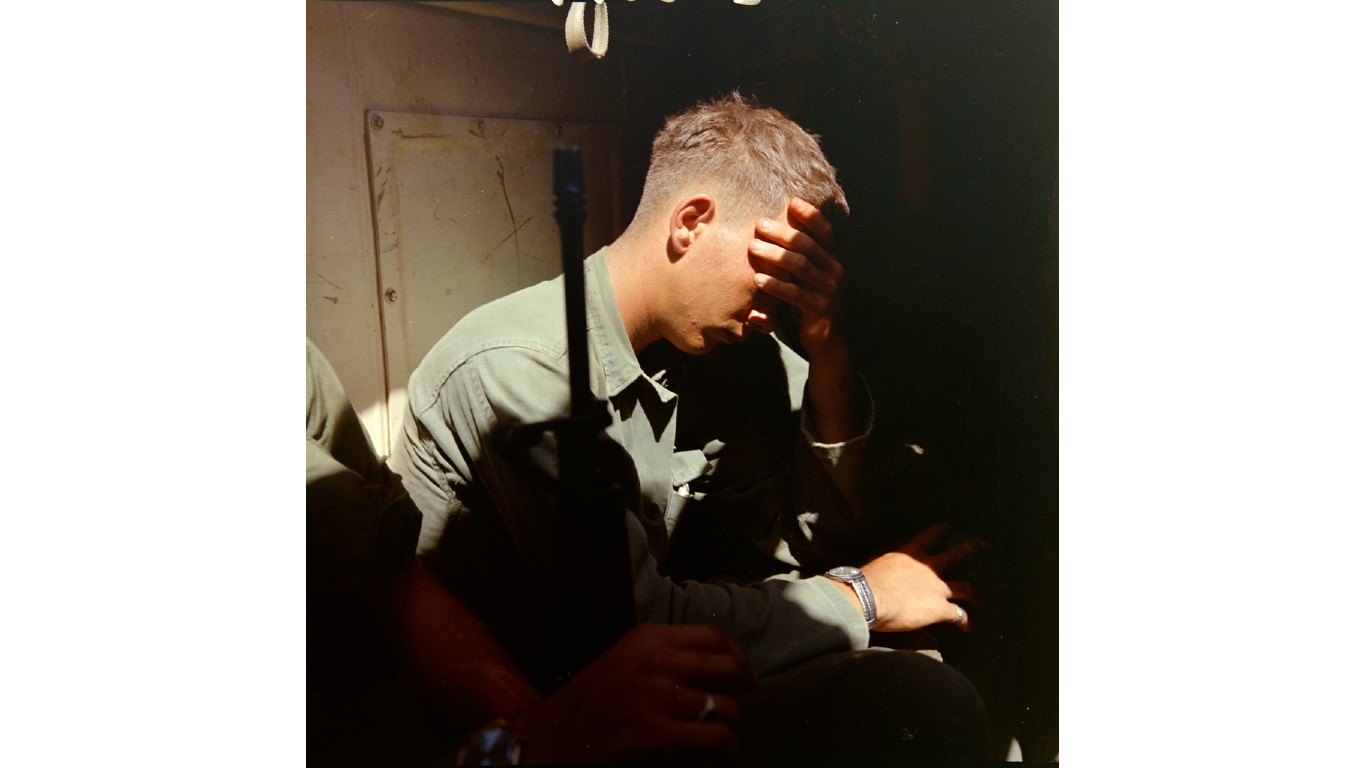
A tired soldier
An American soldier rests inside a M-113 armored personnel carrier that was part of a search and destroy mission against the Viet Cong at Filhol Plantation by the Saigon River, 10 miles northeast of the unit’s base camp at Củ Chi in 1967.
[in-text-ad]
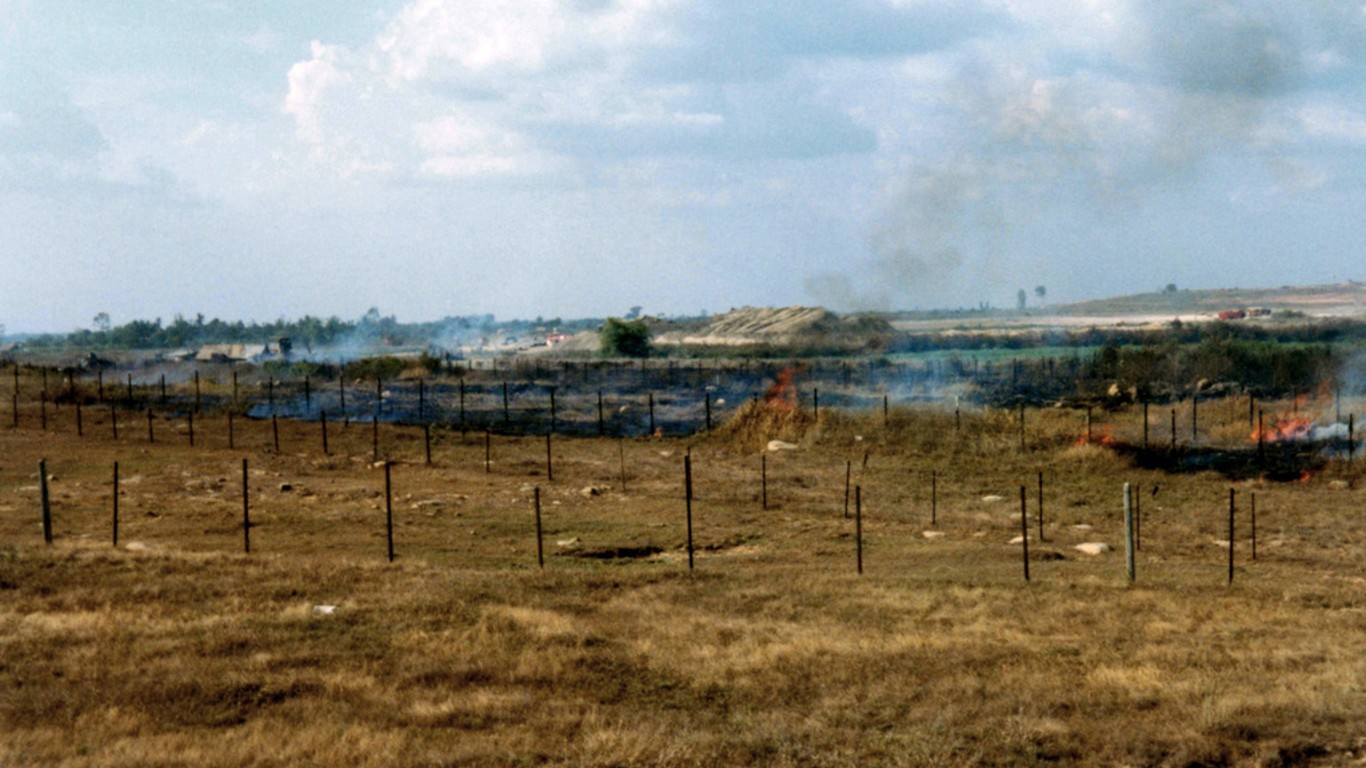
A minefield on fire
A minefield at Biên-Hòa Air Base near Saigon in 1966; somewhere in the area is a South Vietnamese soldier who was wounded after stepping on a landmine.
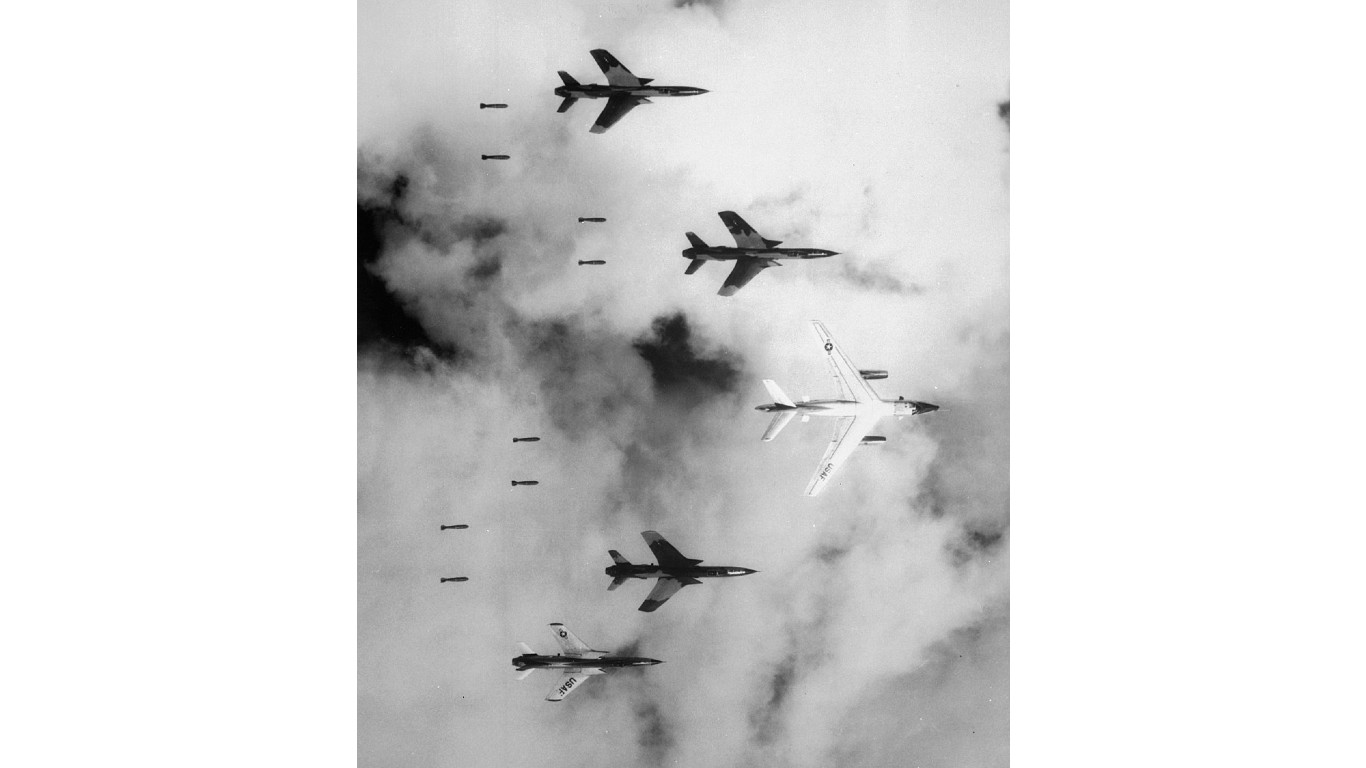
Bombers over North Vietnam
Flying under radar control with a B-66 Destroyer, Air Force F-105 Thunderchief pilots bomb a military target through low clouds over the southern panhandle of North Vietnam on June 14, 1966.

Soldiers in action
South Vietnamese troops advance against Viet Cong guerillas through the marshy terrain of South Vietnam’s delta region.
Are You Still Paying With a Debit Card?
The average American spends $17,274 on debit cards a year, and it’s a HUGE mistake. First, debit cards don’t have the same fraud protections as credit cards. Once your money is gone, it’s gone. But more importantly you can actually get something back from this spending every time you swipe.
Issuers are handing out wild bonuses right now. With some you can earn up to 5% back on every purchase. That’s like getting a 5% discount on everything you buy!
Our top pick is kind of hard to imagine. Not only does it pay up to 5% back, it also includes a $200 cash back reward in the first six months, a 0% intro APR, and…. $0 annual fee. It’s quite literally free money for any one that uses a card regularly. Click here to learn more!
Flywheel Publishing has partnered with CardRatings to provide coverage of credit card products. Flywheel Publishing and CardRatings may receive a commission from card issuers.
Thank you for reading! Have some feedback for us?
Contact the 24/7 Wall St. editorial team.
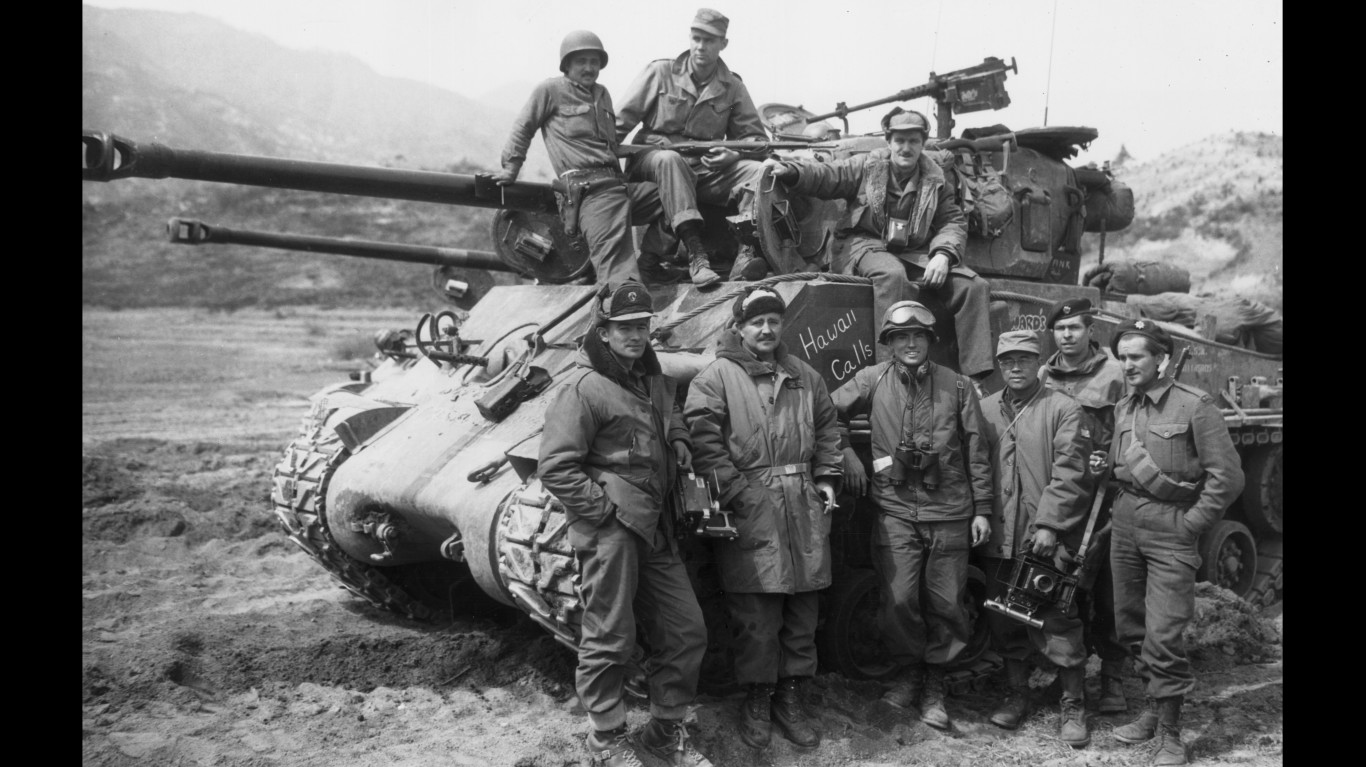 24/7 Wall St.
24/7 Wall St.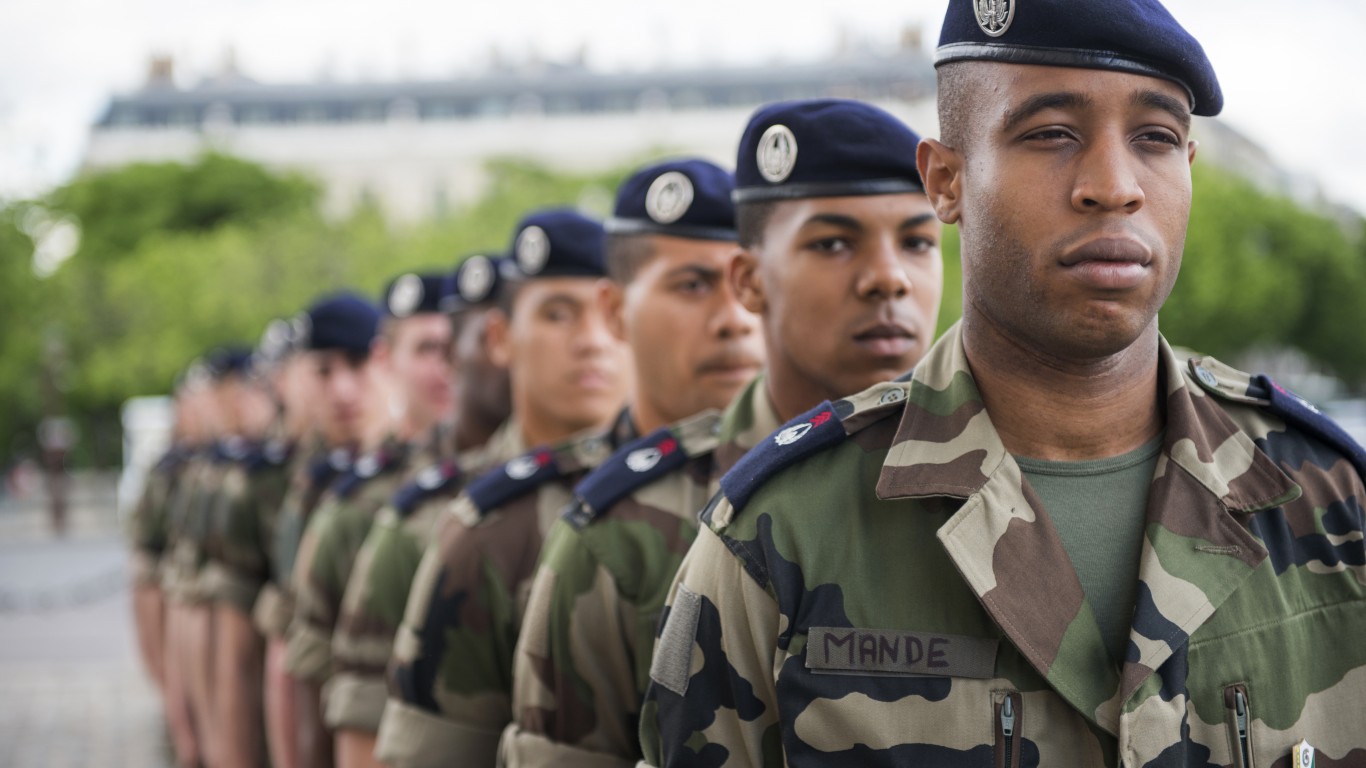 24/7 Wall St.
24/7 Wall St.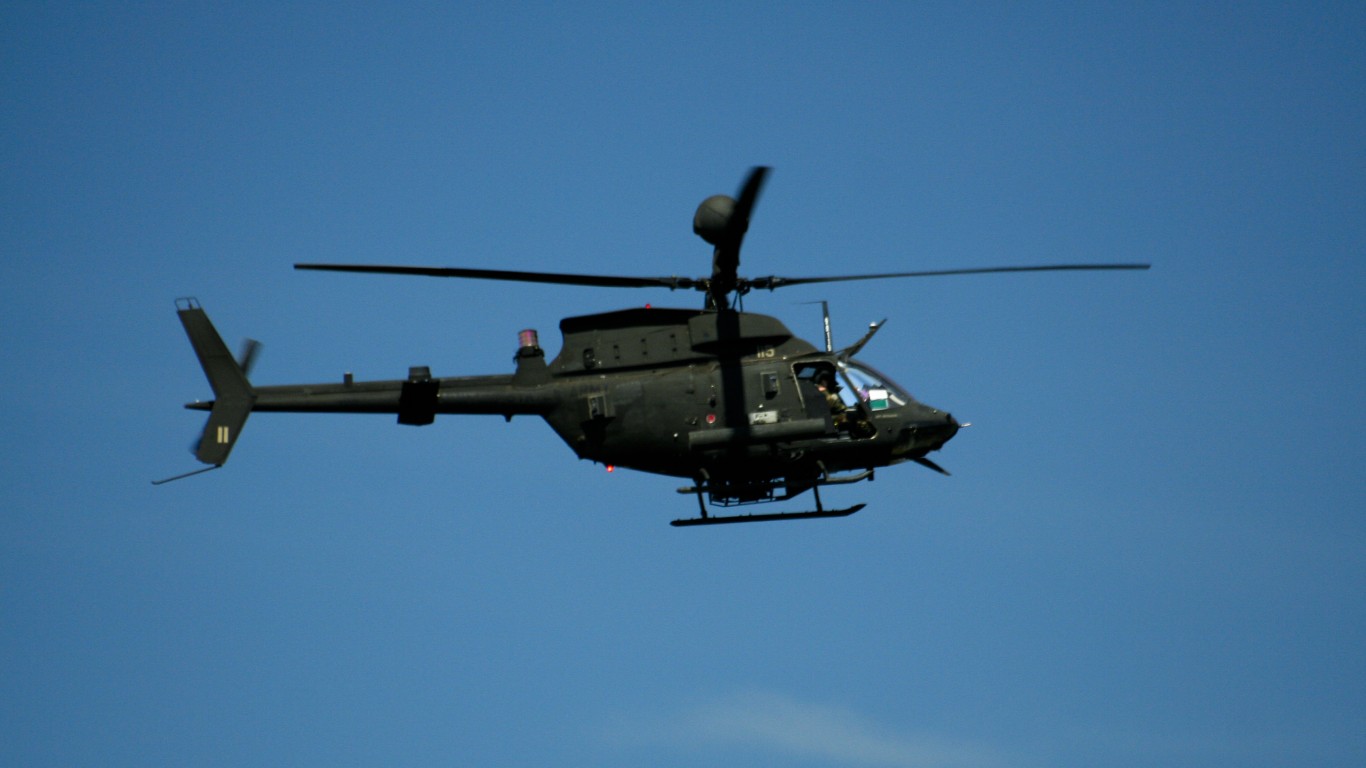 24/7 Wall St.
24/7 Wall St.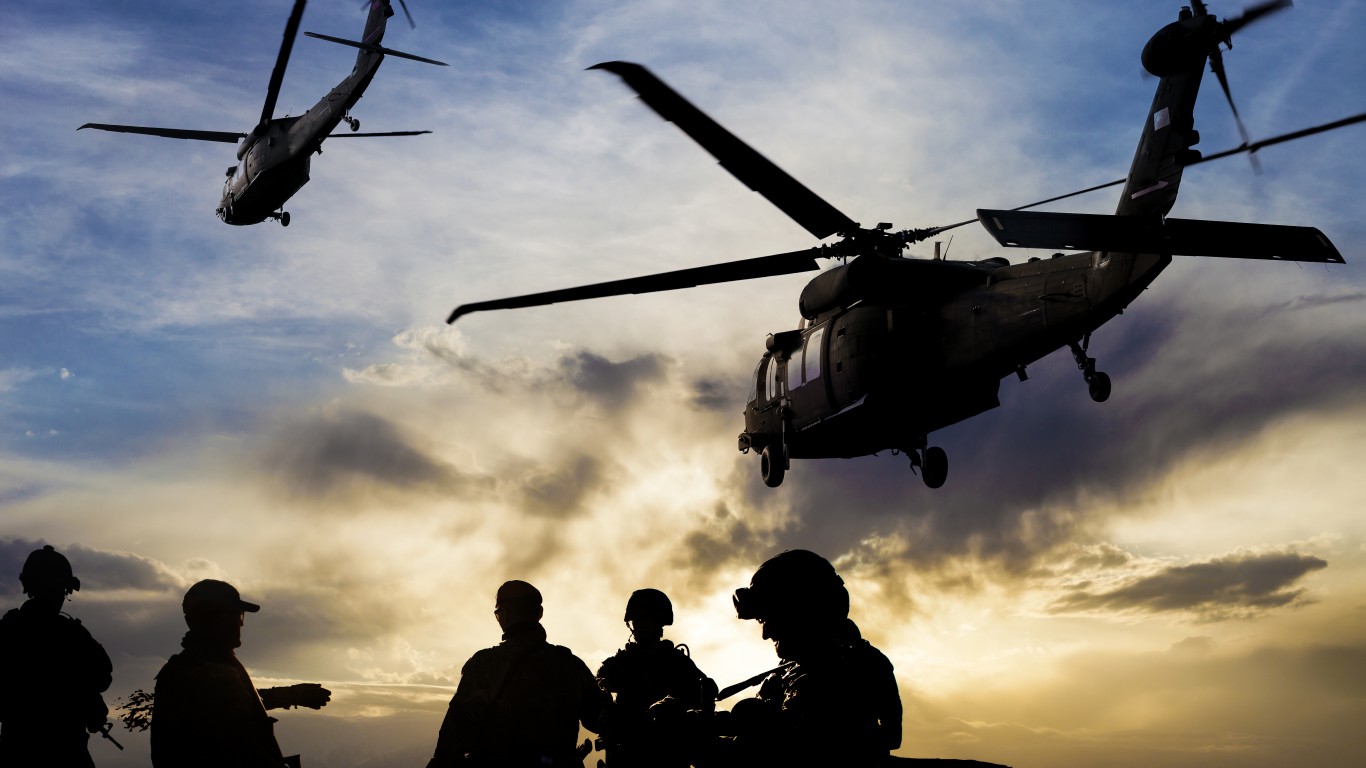 24/7 Wall St.
24/7 Wall St.
